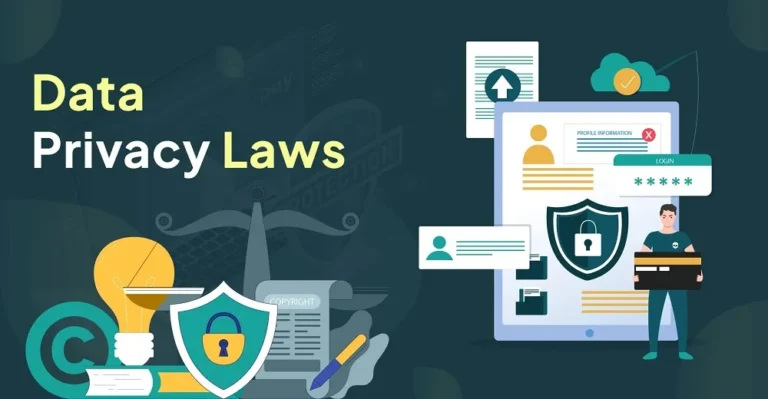
In today’s digital age, identity theft is becoming an increasingly prevalent and concerning threat. As more of our personal information is stored and shared online, criminals are exploiting vulnerabilities to steal sensitive data, which can lead to financial loss, reputational damage, and severe emotional distress. In fact, identity theft has surged in recent years, with millions of people falling victim annually. It’s crucial to understand the risks and take proactive steps to protect yourself from falling into the hands of identity thieves.
Understanding the Threat of Identity Theft
Identity theft occurs when a criminal gains unauthorized access to someone’s personal data, such as Social Security numbers, bank account details, and credit card information. With this information, they can commit fraud, take out loans, open credit accounts, or even gain access to medical services in the victim’s name. This growing crime not only impacts individuals but also undermines the trust and security of the entire digital ecosystem. There are various methods used by identity thieves to collect personal information. These range from phishing scams and data breaches to social engineering and public Wi-Fi attacks. In each case, the goal is to trick individuals into giving away sensitive details or to exploit vulnerabilities in online systems.Common Methods of Identity Theft
- Phishing Scams: Phishing is one of the most common techniques used by cybercriminals. It typically involves sending fraudulent emails, texts, or phone calls that appear to be from legitimate companies or financial institutions. These messages often contain links to fake websites designed to steal personal information. Victims are lured into clicking on the link and entering their data unknowingly.
- Data Breaches: Large-scale data breaches are another significant cause of identity theft. When hackers gain access to the databases of companies, they can steal millions of individuals’ personal information. This data, often including names, addresses, credit card details, and Social Security numbers, is then sold on the dark web or used for fraudulent activities.
- Public Wi-Fi: Many people unknowingly expose themselves to identity theft when using public Wi-Fi networks. These networks, while convenient, are often unencrypted, meaning cybercriminals can easily intercept the information sent between your device and the network. Without proper safeguards, personal information such as passwords, banking details, and login credentials can be compromised.
- Social Engineering: Identity thieves often exploit human psychology through social engineering tactics. This involves manipulating individuals into divulging private information by pretending to be someone trustworthy. Scammers may impersonate a bank representative, customer support agent, or even a colleague to gain access to sensitive data.
Steps to Safeguard Yourself from Identity Theft
Given the variety of threats, it’s essential to take preventive measures to protect your personal information. Here are some of the most effective ways to safeguard yourself online and reduce the risk of identity theft.1. Use Strong and Unique Passwords
One of the easiest yet most effective ways to protect your accounts is by using strong, unique passwords. Avoid using easily guessable information such as birthdates, names, or simple sequences. A strong password typically includes a mix of uppercase and lowercase letters, numbers, and special characters. Additionally, consider using a password manager to store and generate complex passwords for all your accounts.2. Enable Two-Factor Authentication (2FA)
Two-factor authentication (2FA) adds an extra layer of security by requiring two forms of identification: something you know (like a password) and something you have (such as a phone or a security token). Even if a hacker obtains your password, they will still need the second factor to gain access to your accounts. Many online services, including email providers, banking apps, and social media platforms, offer 2FA as an option.3. Monitor Your Credit and Bank Accounts Regularly
Constantly monitoring your credit reports and bank statements is essential for detecting any unusual activity early. In many cases, victims of identity theft do not realize their information has been stolen until significant damage has already been done. By keeping an eye on your financial accounts, you can spot unauthorized transactions and report them immediately. You can also sign up for credit monitoring services that alert you to any changes in your credit report.4. Avoid Clicking on Suspicious Links
Be cautious when receiving unsolicited emails, messages, or phone calls asking for personal information. Always verify the source before clicking on any links or downloading attachments. Look for signs of phishing attempts, such as strange email addresses, urgent requests, or generic greetings. When in doubt, contact the company or organization directly using a verified phone number or email address to confirm the legitimacy of the communication.5. Use Secure Networks
Avoid accessing sensitive accounts or making financial transactions over public Wi-Fi networks. If you must use public Wi-Fi, consider using a Virtual Private Network (VPN) to encrypt your internet connection and protect your data from hackers. Additionally, ensure that your home Wi-Fi network is secured with a strong password and encryption to prevent unauthorized access.6. Shred Sensitive Documents
Physical documents can be just as vulnerable to identity theft as digital information. If you receive mail containing sensitive details like bank statements, tax records, or medical bills, make sure to shred them before disposal. This reduces the risk of criminals obtaining your personal information from discarded paper documents.7. Stay Informed About Security Threats
Lastly, it’s important to stay informed about the latest security threats and identity theft trends. Cybercriminals are constantly evolving their tactics, so keeping up with security news and regularly updating your software can help you remain one step ahead. Ensure that your operating system, antivirus programs, and apps are up-to-date with the latest security patches.Conclusion
The growing threat of identity theft is a serious concern that demands attention and action. As the digital landscape continues to evolve, criminals are finding new ways to exploit personal information. However, by taking proactive steps such as using strong passwords, enabling two-factor authentication, and monitoring your financial accounts, you can significantly reduce the likelihood of falling victim to identity theft. Stay vigilant, stay informed, and safeguard your personal information to protect yourself in the ever-evolving digital world.Read More latest Posts
- Shinobu Kocho’s Grace: Demon Slayer’s Insect Hashira Explained
- Shin Sonic Adventures: Breaking Speed Barriers with Style
- Shikamaru’s Genius: The Master Strategist of Konoha Village
- Shigaraki’s Rise to Power: Villainy Redefined in My Hero Academia
- Shenhe’s Mysterious Power: A Genshin Impact Character Guide






